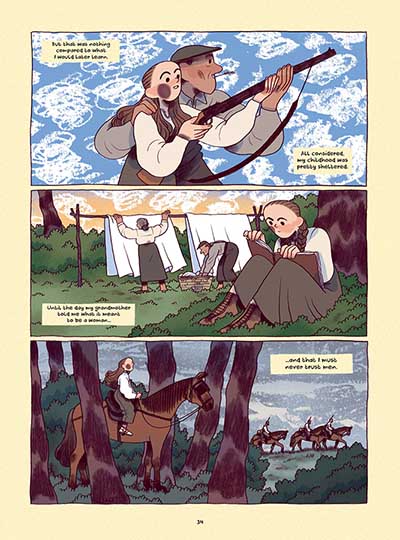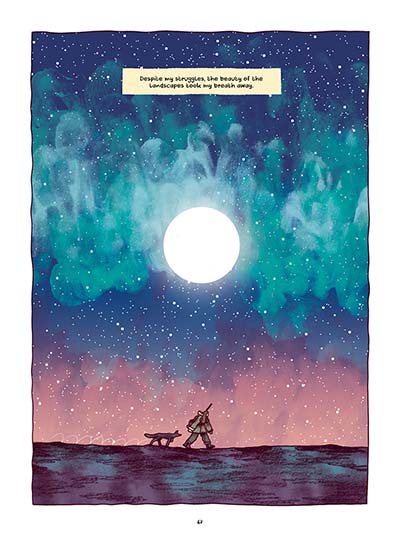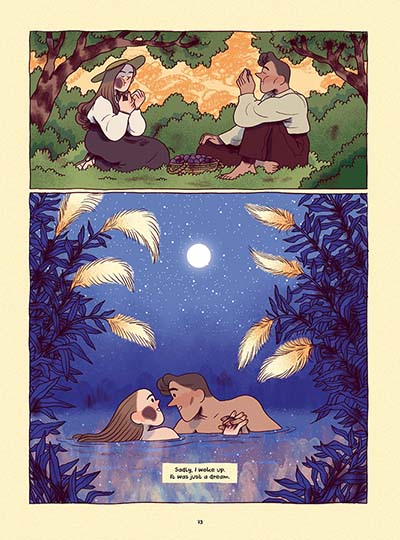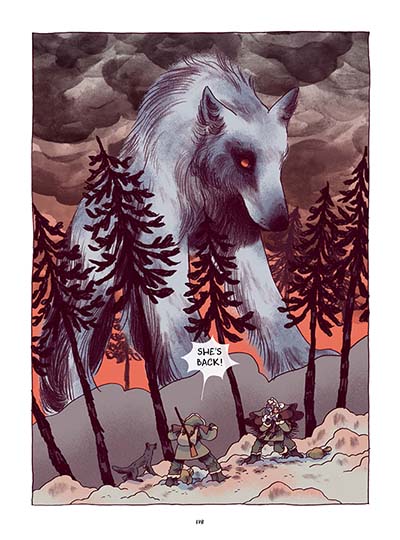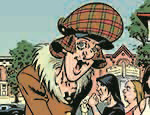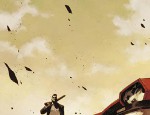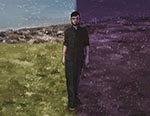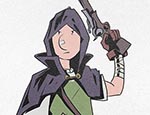Vivid in glossy hardback, my first thought when looking at the cover of Daughters of Snow and Cinders was awe. The cover is an absolute work of art. A traveller and a wild dog look up at the star entrenched night sky, as a glowing full moon shines down on them. Coloured in pale blues and purples, with black willowing trees arching over the central image, wisps of snow fall at our protagonists’ feet, as an icy lake stretches onwards. However, reflected in the ice is a dark and twisted mirror image of the serene scene that initially draws our eye. Coloured in much darker purple hues, the reflection in the lake still depicts the arching trees and beautiful night sky, but this time with a huge wolf head howling, with an angry and vicious look in its eye.
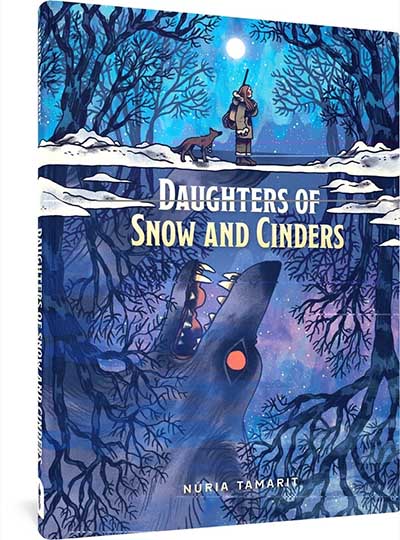
The narrative begins from the wolf’s perspective, and she is indeed as angry as she appears on the cover. Rightfully so, as her land has been taken over by corrupt men. She tells the reader how the realm of animals and of humans isn’t so different, and warns that we have the same enemy. She hopes that one day they may be defeated, so that we may live in peace.
Part one of the tale is aptly titled ‘Departure’. We are introduced to our central character Joana, who tells us about the legend of El Dorado – it is said that people could go there to pan gold and make their fortune. Joana’s backstory is expanded on as the story goes on, but with no home and few possessions after her home is torn apart by war, Joana thinks a voyage to the New World must be worth a try. However, an obstacle soon lies in her way upon her arrival – none of the men will allow a woman to join their gold-hunting expedition. Thankfully, a helpful stranger named Tala points her in the direction of the one captain who will allow women on his voyage: Captain Matwei. Trading her rare black wolf skin for passage, Joana finally sleeps soundly, only to discover she has been conned and left behind when the sun rises.
Daughters of Snow and Cinders really picks up when Joana, in her attempt to follow the motley crew, discovers an abused dog, who instantly imprints on her. Affectionally named ‘Peg’, they soon run into trouble when they eventually catch up to the crew, who only see the dog as food. This is where it gets interesting; running in to defend the dog comes the rabid wolf from the book’s cover, white as the snow, huge in stature and terrifying. Joana and Peg use the distraction to escape as the wolf reaps chaos, showing her great displeasure.
Following on from this, the story flips between that of Joana and Peg, and of Tala and Captain Matwei, with occasional snippets from the large wolf’s perspective. Matwei and his crew are verbally and physically abusive to Tala and the female doctor on hand, Opa, often berating and hurting them. Some of these scenes can be quite distressing to read, so here’s our trigger warning for violence, gore and animal abuse. Even when Tala is leading Matwei and his men to the gold, giving them exactly what she promised, she is still considered less than: ‘Whod’ve thought! A woman’s made me rich’.
Meanwhile, Joana and Peg are nearly starving, searching for shelter in the galling snow. What follows are epic highs and lows, fatalities, tear-jerking passages and pages that will make you gasp aloud, as Joana, Tala and Opa eventually team up to reclaim the land for nature, and away from the evil men who just want to exploit it. It’s a wonderful, eco-feminist message about overcoming our greedy instincts, and respecting nature and its provisions, not selfishly exploiting and plundering it. The fact that this team of strong women are the ones trying to reclaim it for Mother Nature is the cherry on the cake.
At least some of this review must be dedicated simply to the stunning artwork. The use of coloured pencils to depict the icy depths of the wilderness is visually gorgeous, and the faces of our characters are illustrated with such a depth of expression: from malice to hunger to joy. Particularly stunning are the transitional spreads after every new chapter, which exude copious amounts of detail and skill. We also loved the flashbacks to Joana’s homeland; coloured in warmer shades of orange, green and sunshine, the panels are softer somehow, with a subtle difference in character design, making them more cartoonish in appearance. Contrasting with the eerie colder shades of the current day, Joana’s past and present circumstances could not be more distinct.
With such strong women at the centre of the narrative, it’s not surprising that this gorgeous book was written by a strong woman: Daughters of Snow and Cinders is the English debut of Spanish cartoonist and illustrator Núria Tamarit and is beautifully translated by Jenna Allen. Daughters of Snow and Cinders is a thought-provoking, moving read from Fantagraphics.
Núria Tamarit (W), Jenna Allen (T) • Fantagraphics, $29.99
Review by Lydia Turner





